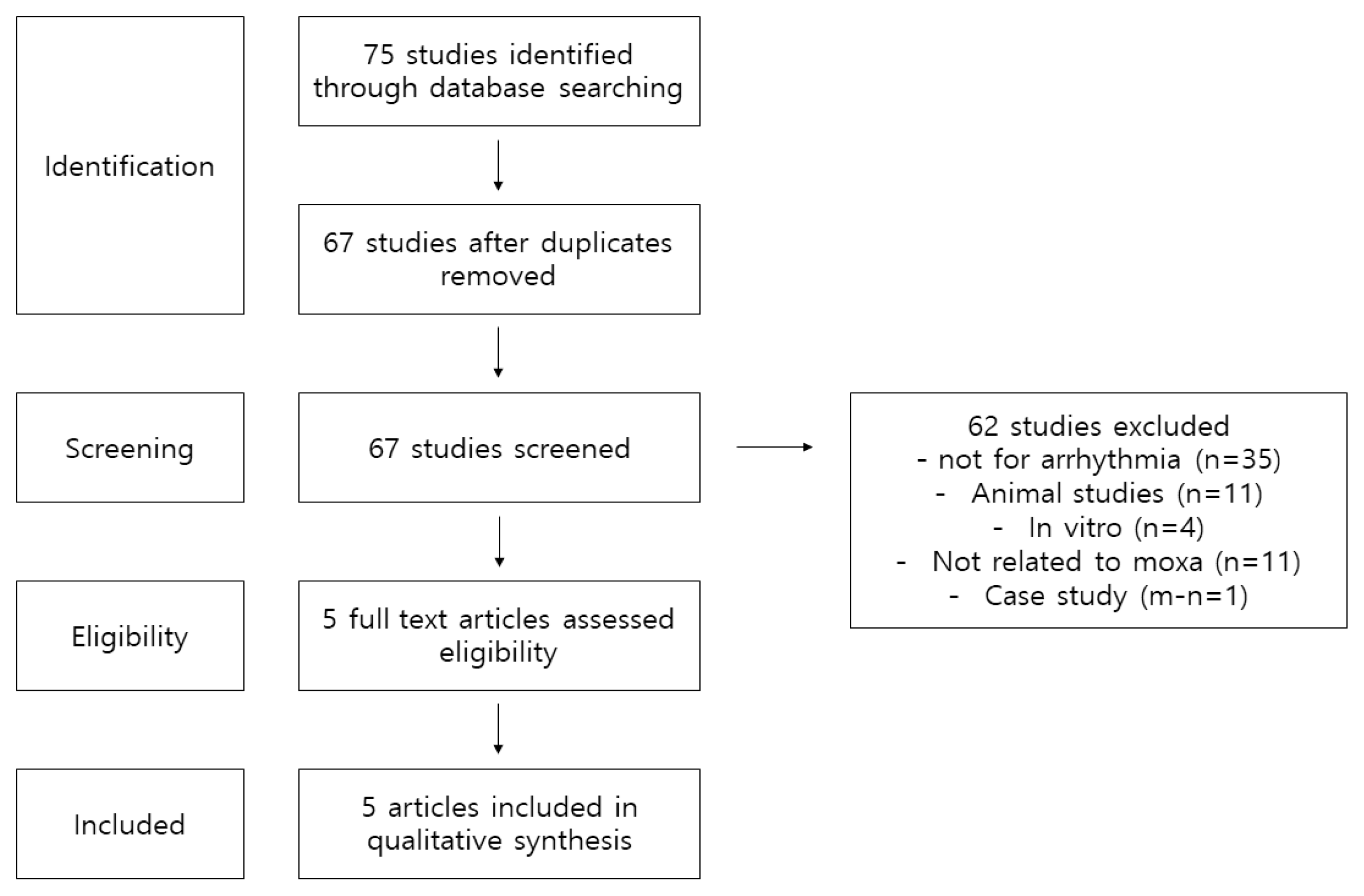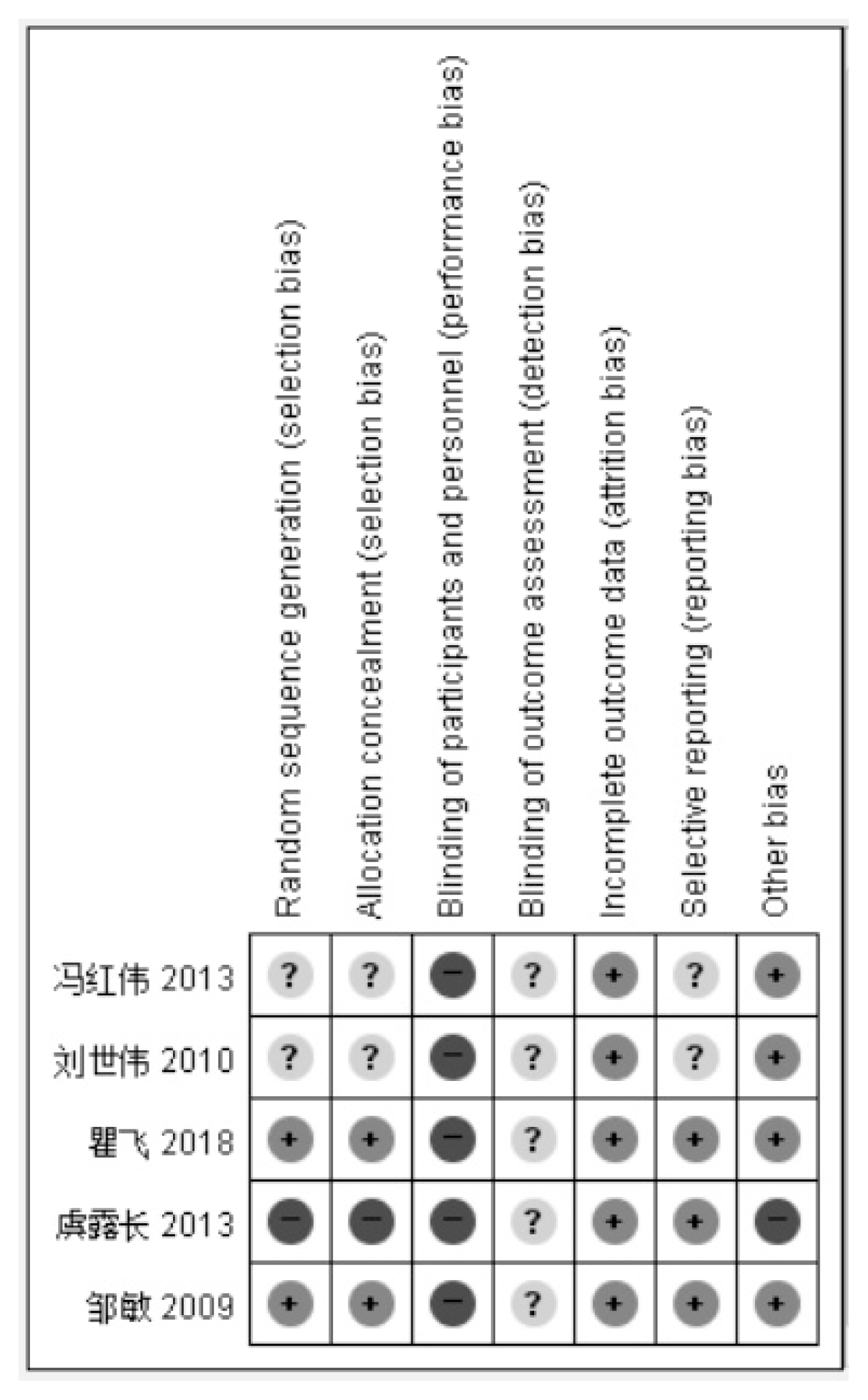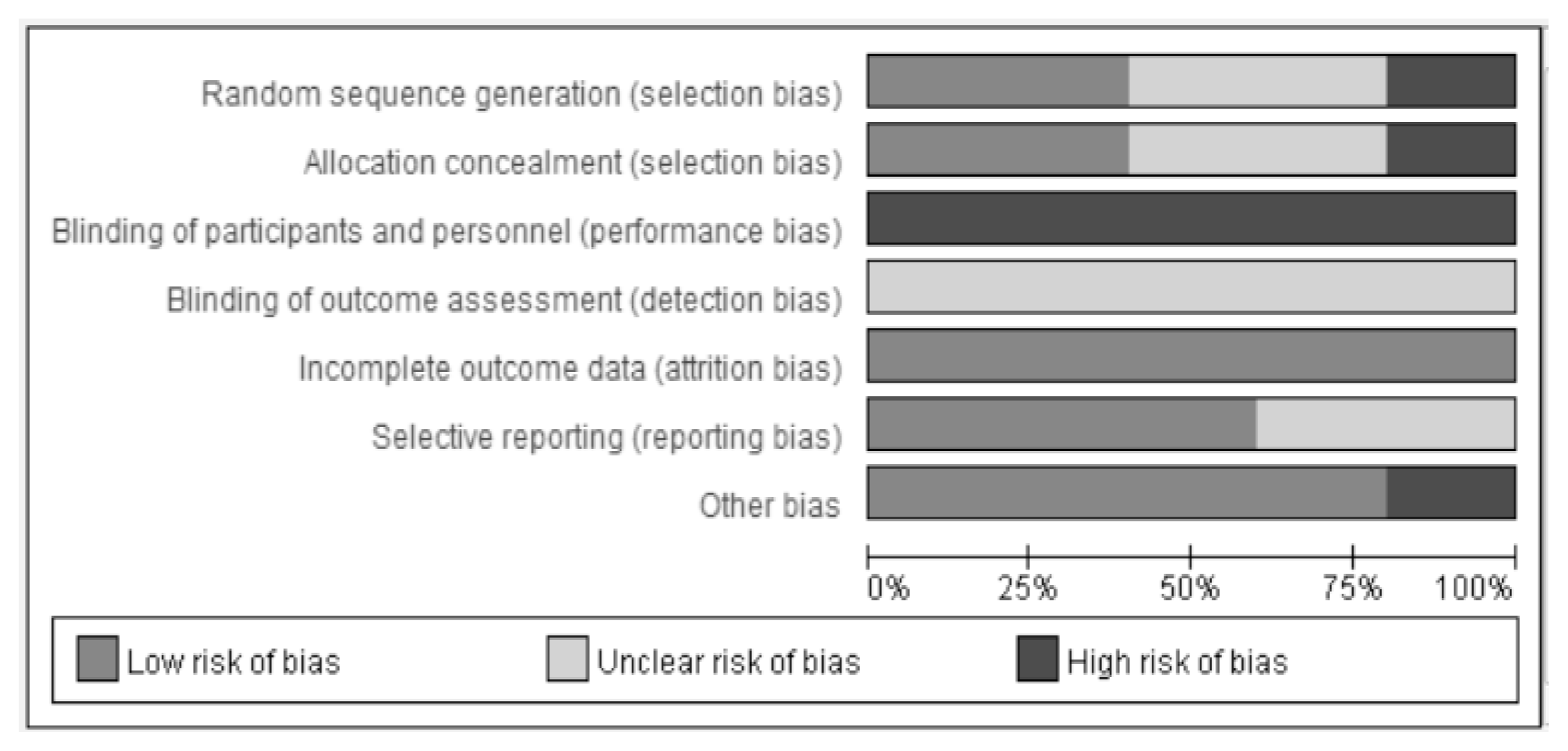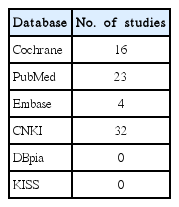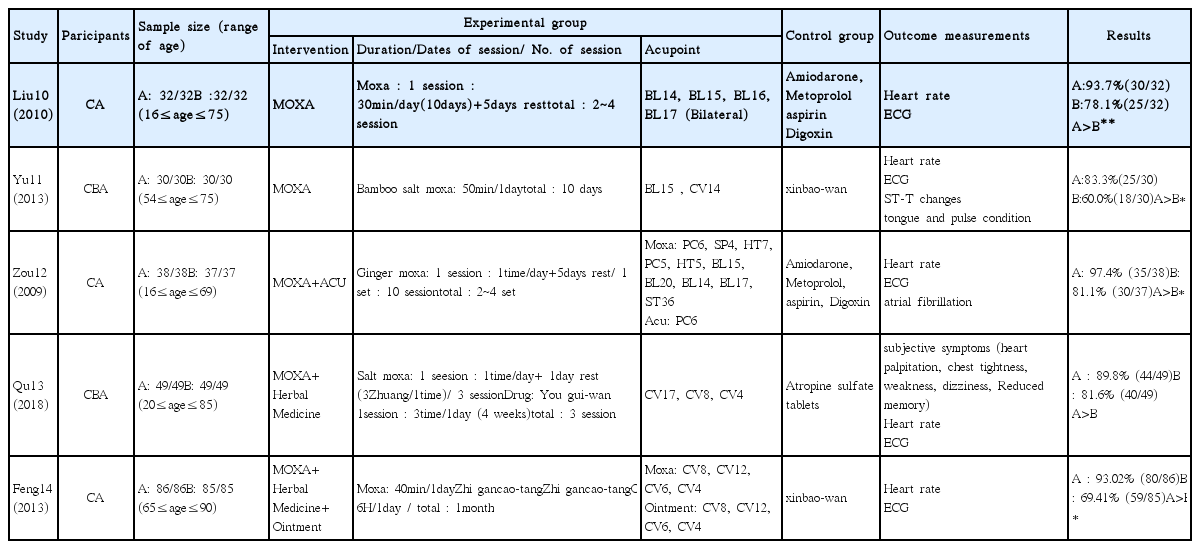References
1. Cho JG. Recent Advancement in the Management of the Cardiac Arrhythmia. J Korean Med Assoc 2010;53(3):190–195.
2. Jang HJ, Lim JS. Detection of Arrhythmia Using Heart rate Variability and A Fuzzy Neural Network. Korean society for internet information 2009;10(5):107–116.
3. Kwon SS, Lim KM, Shim EB. The three dimensional analysis for the arrhythmia of the atrium. The korean society of mechanical engineers 2008;11:1669–1673.
4. Association of korean medicine professors for cardiovascular and neurological medicine. Cardiovascular and Neurological Medicine in korean medicine revision Seoul: Woori medical books; 2018. p. 192–228.
5. Chan EW, Lau WCY, Siu CW, et al. Effect of suboptimal anticoagulation treatment with antiplatelet therapy and warfarin on clinical outcomes in patients with nonvalvular atrial fibrillation: a population-wide cohort study. Heart Rhythm 2016;13(8):1581–1588.
6. Textbook Compilation Committee of The jounal of korean acupuncture & moxibustion society. Acupuncture medicine 4 editionth ed. Seoul: hanmi medicine publishing company; 2016. p. 105.
7. Li C. Original introduction to medicine Seoul: Daesung Publishing Company; 1990. p. 529.
8. Liu Y, Park JE, Kim AR, Jung HJ, Choi SM. Review of moxibustion treatment for hypertension in clinical trials. The jounal of korean acupuncture & moxibustion society 2011;28(5):87–96.
9. Xiao YC, Fang L. The Moxibustion Sensations and the Therapeutic Effects. China Journal of Traditional Chinese Medicine 2005;25(2):95–96.
10. Liu SW, Liu T. Clinical Observation of Moxibustion on Beiyu Point for Arrhythmia. Occupation and Health 2010;26(14):1656–1656.
11. Yu LZ. Clinical Efficacy of Moxibustion with Salt in Bamboo Circle for Treatment of Bradyarrhythmia of Heart Yang Deficiency Fujian university of traditional chinese medicine; 2013.
12. Zou M. Clinical observation on therapeutic effect of combination of acupuncture and ginger-partition moxibustion. Chinese Acupuncture & Moxibustion 2009;29(11):876–878.
13. Qu F, zhang YP, jie Liu. Therapeutic Observation of Salt-partitioned Moxibustion plus Oral Administration of You Gui Wan for Bradycardiac Arrhythmias. Shanghai J Acu-mox 2018;37(3):286–288.
14. Feng HW. Treatment of 86 cases of senile chronic arrhythmia with internal and external combination. China’s naturopathy 2013;21(10):42.
15. Rhee KS. The Role of Antiarrhythmics in Atrial Fibrillation. Journal of The Korean Association of Internal Medicine 2016;90(3):198–205.
16. Kirchhof P, Franz MR, Bardai A, Wilde AM, Giant TU. Waves precede torsades de pointes in long QT syndrome: a systematic electrocardiographic analysis in patients with acquired and congenital QT prolongation. J Am Coll Cardiol 2009;54:143–149.
17. Connolly SJ, Camm AJ, Halperin JL, et al. Dronedarone in high-risk permanent atrial fibrillation. N Engl J Med 2011;365:2268–2276.
18. Køber L, Torp-Pedersen C, McMurray JJ, et al. Increased mortality after dronedarone therapy for severe heart failure. N Engl J Med 2008;358:2678–2687.
19. Oh SI. Catheter ablation for treatment of tachyarrhythmia. Journal of Korean Medical Association 2016;59(5):374–378.
20. Kim JY. Drug therapy for arrhythmia. The Korean Journal of Medicine 2006;71(5):589–592.
21. Oh YS. Indications for pacemaker therapy in bradycardia. The Official Journal of Korean Heart Rhythm Society 2014;15(3):31–34.
22. Kim KM, Jeong GS, Kim YG, Kwon JN. A Investigation into Arrhythmia between East and West medicine. Korean J Orient Int Med 2000;21(05):747–763.
23. Liu J, Li SN, Liu L, Zhou K, Li Y, Cui XY, et al. Conventional Acupuncture for Cardiac Arrhythmia: A Systematic Review of Randomized Controlled Trials. Chin J Integr Med 2018;24(3):218–226.
24. Fei Y, Fei R, Zhang J, Sun Y, Yu Q. Systematic Evaluation of Efficacy and Safety of Acupuncture Treatment for Patients with Atrial Fibrillation. Open Access Maced J Med Sci 2019;7(3):461–466.
25. Wen WX, Li XS, Guo XF, Zhou L, Lv WH. Effectiveness and safety of acupuncture for supraventricular tachycardia: a systematic review and meta-analysis. Chinese acupuncture and moxibustion 2014;34(11):1146–50.
26. He M, Lv Z, Yang ZW, Huang JL, Liu F. Efficacy and safety of Chinese herbal medicine Wenxin Keli for ventricular premature beats: A systematic review. Complementary Therapies in Medicine 2016;29:181–189.
27. Tian CH, zang JQ. Chinese moxibustion method collection Shenyang: Liaoning Science and Technology Publishing Company; 1987. p. 21–28.
28. Yuan YS, hao XJ. Moxibustion Health Shenyang: Liaoning Science and Technology Press; 1996. p. 9–200.
29. Hwang MS. Study on the Treatment Mechanism of Back-Shu Points for Organ Dysfunction. Korean Journal of Acupuncture 2016;33(3):95–101.
30. Lee BG. great achievement of acupuncture and moxibustion Seoul: Acupuncture korea; 2005. p. 616.
31. Choi HJ. Yellow emperor’s inner canon Seoul: Jayou Publishing Company; 2004. p. 40.
32. Qing Y. Pharmacological action and clinical research of Xinbao Pill. China Prescription Drug 2004;10:69–70.
33. Yu XX, Zhou XS, Wu YH, Ou AH, DING BH. Systematic Evaluation of Xinbao Pills in Treating Chronic Heart Failure. Journal of Guangzhou University of Traditional Chinese Medicine 2019;36(2):153–169.

